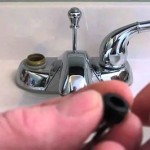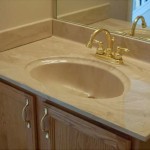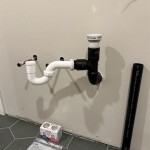The Comprehensive Guide to Single Sink Bathroom Vanity Sets
Bathroom vanity sets are essential components of any bathroom design, providing both aesthetic appeal and functional storage. Among the various types available, single sink bathroom vanity sets stand out as a versatile and practical choice for a wide range of bathroom sizes and styles. These sets typically comprise a cabinet base, a countertop, and a sink, often accompanied by hardware such as faucets, handles, and sometimes even a mirror. Understanding the different aspects of single sink vanity sets can aid in making an informed decision when renovating or updating a bathroom.
The popularity of single sink vanity sets stems from their adaptability. They can fit comfortably in smaller bathrooms where space is limited, yet they can also serve as an elegant and efficient solution in larger bathrooms. The design options are virtually limitless, spanning from traditional to contemporary styles, allowing homeowners to match the vanity set to their overall bathroom décor. Furthermore, the pre-packaged nature of these sets simplifies the installation process, saving time and potential costs associated with piecing together individual components.
This guide aims to provide a comprehensive overview of single sink bathroom vanity sets, covering various aspects such as materials, styles, sizes, installation considerations, and maintenance tips. By exploring these key elements, readers can gain a deeper understanding of the factors to consider when selecting the ideal single sink vanity set for their specific needs and preferences.
Understanding the Components and Materials
Single sink bathroom vanity sets are composed of several key components, each contributing to the overall functionality and aesthetic appeal of the unit. The core elements typically include the cabinet base, the countertop, and the sink. Additionally, hardware such as faucets, handles, and drawer pulls play a significant role in the overall design and usability of the vanity.
The cabinet base provides the primary storage space and structural support for the vanity. These cabinets are typically constructed from various materials, each with its own set of advantages and disadvantages. Solid wood, such as oak, maple, or cherry, is a popular choice for its durability and natural beauty. However, solid wood can be more expensive and susceptible to moisture damage. Plywood, particularly marine-grade plywood, offers better water resistance and stability compared to solid wood, making it a suitable option for bathroom environments. Medium-density fiberboard (MDF) is another common material, known for its affordability and smooth surface, which is ideal for painting or applying veneers. However, MDF is less resistant to moisture than plywood or solid wood.
The countertop is a crucial element of the vanity set, providing a surface for daily tasks such as washing hands, applying makeup, and storing toiletries. Common countertop materials include granite, marble, quartz, and solid surface materials. Granite and marble are natural stones prized for their elegance and durability. However, they require sealing to prevent staining and can be relatively expensive. Quartz is an engineered stone that offers a similar aesthetic to granite and marble but is more resistant to staining and scratching. Solid surface materials, such as acrylic or polyester blends, are non-porous, easy to clean, and available in a wide range of colors and patterns.
The sink is an integral part of the vanity set, and its style and material can significantly impact the overall look and functionality of the bathroom. Undermount sinks are installed beneath the countertop, creating a seamless and easy-to-clean surface. Vessel sinks sit on top of the countertop, adding a unique design element. Drop-in sinks are installed into a pre-cut hole in the countertop, offering a more traditional look. Sink materials include porcelain, ceramic, stainless steel, and even glass or stone. Porcelain and ceramic are durable, easy to clean, and resistant to staining. Stainless steel is a more contemporary option, known for its durability and resistance to corrosion.
The hardware components, such as faucets, handles, and drawer pulls, provide the finishing touches to the vanity set. Faucets come in various styles, including single-handle, double-handle, and widespread designs, each with its own set of advantages in terms of ease of use and water flow control. Finishes such as chrome, brushed nickel, and oil-rubbed bronze can complement the overall bathroom décor. Handles and drawer pulls are available in a wide range of styles and materials, allowing homeowners to customize the look of their vanity. These small details can significantly impact the overall aesthetic appeal and functionality of the vanity set.
Exploring Styles and Sizes of Single Sink Vanities
Single sink bathroom vanities are available in a diverse range of styles and sizes to accommodate various bathroom layouts and design preferences. Understanding the different style categories and size options can help homeowners select a vanity that complements their existing décor and meets their specific storage needs.
In terms of style, single sink vanities can be broadly categorized into traditional, modern, transitional, and rustic designs. Traditional vanities often feature ornate details, such as raised panel doors, decorative moldings, and antique-inspired hardware. These vanities evoke a sense of elegance and sophistication, often incorporating classic materials such as solid wood and marble. Modern vanities, on the other hand, embrace clean lines, minimalist designs, and contemporary materials such as glass, stainless steel, and laminate. These vanities often feature floating designs or sleek, handle-free doors, creating a sense of spaciousness and simplicity. Transitional vanities blend elements of both traditional and modern styles, offering a balanced and versatile aesthetic. These vanities often feature shaker-style doors, subtle curves, and neutral color palettes, making them suitable for a wide range of bathroom designs. Rustic vanities incorporate natural materials such as reclaimed wood, stone, and metal, creating a warm and inviting atmosphere. These vanities often feature distressed finishes, exposed hardware, and unique textures, adding character and charm to the bathroom.
The size of a single sink vanity is another crucial consideration, as it must fit comfortably within the available space while providing adequate storage. Vanities are typically measured by their width, depth, and height. Common widths for single sink vanities range from 24 inches to 48 inches, with variations available to accommodate specific bathroom dimensions. The depth of the vanity is typically between 18 inches and 22 inches, providing sufficient countertop space without encroaching too much into the room. The height of the vanity is typically between 30 inches and 36 inches, with taller vanities becoming increasingly popular for their ergonomic benefits.
When selecting a vanity size, it is important to consider the overall layout of the bathroom and the placement of other fixtures, such as the toilet and shower. Adequate clearance space should be maintained around the vanity to allow for comfortable movement and access to storage. In smaller bathrooms, a wall-mounted or corner vanity can maximize space utilization. In larger bathrooms, a double-sink vanity or a combination of vanities can provide ample storage and countertop space.
Beyond the standard dimensions, custom-sized vanities can be created to meet specific requirements. Custom vanities allow for greater flexibility in terms of design, materials, and storage configurations. They can be tailored to fit unique spaces or to incorporate specific features, such as built-in shelving, pull-out drawers, or customized hardware. While custom vanities can be more expensive than pre-fabricated options, they offer a personalized solution that perfectly complements the homeowner's vision.
Installation and Maintenance Considerations
The installation and maintenance of a single sink bathroom vanity set are essential aspects of ensuring its longevity and performance. Proper installation can prevent issues such as leaks, instability, and damage to the surrounding area. Regular maintenance can help preserve the vanity's appearance and functionality, preventing issues such as staining, warping, and hardware malfunctions.
The installation process typically involves several steps, including removing the old vanity (if applicable), preparing the plumbing connections, installing the new vanity base, connecting the sink and faucet, and sealing the countertop. It is crucial to follow the manufacturer's instructions carefully and to ensure that all plumbing connections are properly sealed to prevent leaks. Depending on the complexity of the installation, it may be advisable to hire a professional plumber or contractor to ensure that the job is done correctly.
Before installing the vanity, it is important to inspect the plumbing connections and ensure that they are in good working order. Replace any worn or damaged pipes or fittings to prevent leaks. Turn off the water supply to the bathroom before disconnecting the old vanity and connecting the new one. When connecting the sink and faucet, use plumber's tape or pipe sealant to ensure a watertight seal. After installing the vanity, test the plumbing connections to check for leaks and make any necessary adjustments.
Maintaining a single sink bathroom vanity set involves regular cleaning and preventive measures to protect the materials from damage. Clean the countertop regularly with a mild soap and water solution to remove spills and stains. Avoid using abrasive cleaners or harsh chemicals, as they can damage the surface of the countertop. For natural stone countertops, such as granite or marble, apply a sealant periodically to prevent staining and water damage. Clean the sink regularly with a non-abrasive cleaner to remove soap scum and mineral deposits. Inspect the plumbing connections periodically for leaks and make any necessary repairs.
To prevent moisture damage to the vanity cabinet, ensure that the bathroom is properly ventilated. Use the exhaust fan during and after showers to remove excess moisture from the air. Wipe up any spills or water splashes immediately to prevent them from seeping into the wood or MDF. Consider using a dehumidifier in the bathroom to reduce humidity levels, especially in areas with high humidity. Inspect the hardware periodically and tighten any loose screws or bolts. Replace any damaged or corroded hardware to maintain the functionality and appearance of the vanity.

Ravenna 48 Single Sink Bathroom Vanity Combo Set Homebeyond

30 Single Sink Bathroom Vanity Set With And Mirror Millcreek Bath Kitchen

59 Modern Floating Bathroom Vanity Set With Single Sink Wall Mounted In White Natural Homary

London 54 Single Sink Bathroom Vanity Set With And Mirror 2 Si

Siavonce 17 9 In W X 31 5 D 20 3 H Single Sink Bath Vanity Set Black White Ceramic Basin Top And Mirror Faucet Ry Yx 4572 4575 The Home Depot

Silkroad Exclusive V0285tr36r Universal 36 In Bathroom Vanity Set

Foremost Abbott 58 In White Single Sink Bathroom Vanity Set With Engineered Stone Top Abwvt5821 Rona

Vanity Art Ravenna 36 In W Bathroom Espresso With Single Basin White Engineered Marble Top And Mirror Va3136 E The Home Depot

Vanity Art 24 Inch Single Sink Bathroom Compact Set 2 Large Folding Doors 1 Shelf Dove Tailed Drawers Ceramic Top Cabinet With Free Mirror Va3024b Com

Free On 35 Modern Floating Bathroom Vanity Set With Single Sink White And Natural Homary Wall Mounted
Related Posts







